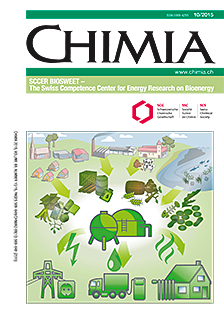CO Methanation for Synthetic Natural Gas Production
DOI:
https://doi.org/10.2533/chimia.2015.608Keywords:
Catalyst deactivation, Co methanation, Ni/al2o3, Reaction mechanism, SngAbstract
Energy from woody biomass could supplement renewable energy production towards the replacement of fossil fuels. A multi-stage process involving gasification of wood and then catalytic transformation of the producer gas to synthetic natural gas (SNG) represents progress in this direction. SNG can be transported and distributed through the existing pipeline grid, which is advantageous from an economical point of view. Therefore, CO methanation is attracting a great deal of attention and much research effort is focusing on the understanding of the process steps and its further development. This short review summarizes recent efforts at Paul Scherrer Institute on the understanding of the reaction mechanism, the catalyst deactivation, and the development of catalytic materials with benign properties for CO methanation.Downloads
Published
2015-10-28
Issue
Section
Scientific Articles
License
Copyright (c) 2015 Swiss Chemical Society

This work is licensed under a Creative Commons Attribution-NonCommercial 4.0 International License.
How to Cite
[1]
A. Kambolis, T. J. Schildhauer, O. Kröcher, Chimia 2015, 69, 608, DOI: 10.2533/chimia.2015.608.







